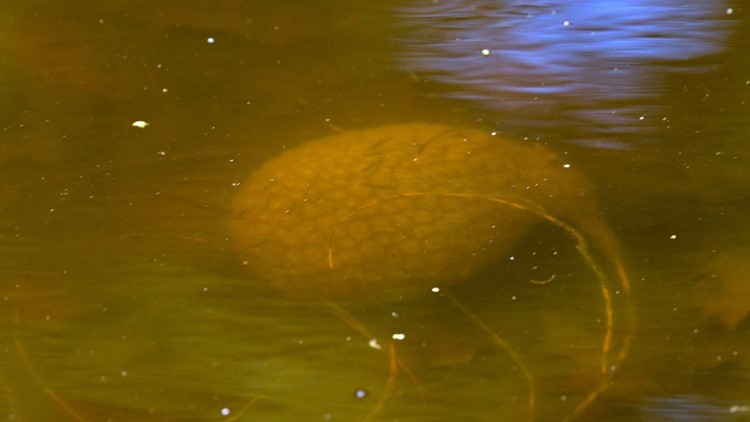BANGOR, Maine — Ever see something so martian-looking you wonder if you've somehow come across a brand new species, or a probe from another galaxy?
That's what happened to Stacey Feldmus last week at Mount Hope Cemetery in Bangor. "I thought [it] was an Alien egg," she jokingly wrote later.
So what'd she do? Well, Feldmus did what any other inquisitive person would and posted a photo of it on the Facebook group Maine Wildlife:
"This was in the pond at Mount Hope Cemetery. Anyone know what this is? It’s roughly the size of a basketball. If this doesn’t classify as wildlife, I will delete. Some are guessing a sac with frog eggs? It’s the first time I have seen one and the first thing I thought, was an Alien egg (joking of course)."
Dozens of comments followed. Some, of course, were startled.
"What the heck!??" exclaimed Rhonda.
"Looks like a huge tadpole," said Stefanie.
"Oh my gosh, creepy," commented Diane.
Then came some familiar with the object.
Bethany said she's seen them in the Saco River; Meredith wrote that they're in Damariscotta between Pemaquid Pond and Biscay Pond; Suzanne commented saying she found one in West Gardiner and Manchester's Cobbosseecontee Stream a few years ago; and a separate Diane said she had them attached to her dock a couple years back.
Finally, the answers came rolling in. It was a bryozoan colony.
Bryozoa, also known as "moss animals," are aquatic organisms, living for the most part in colonies of interconnected individuals, according to the University of California Museum of Paleontology at Berkeley, or UCMP.
At times, the colony can be comprised of a few to many millions of bryozoa, and in collective physical size can range from millimeters to meters. Each individual bryozoa making up the colony are rarely larger than a millimeter.
Bryozoan colonies exist in both marine and freshwater and feed on small microorganisms, UCMP says, including diatoms and other unicellular algae, trapped using the organism's ciliated feeding tentacles, called lophophore.
According to the Public Health Department of Washington state's Thurston County, bryozoans filter water for their food, and some freshwater varieties are thought to be useful indicators of water quality.
So there you have it.
Bryozoa remain largely unknown to most people, UCMP says, so many of you may have just learned something new.
Find the original post from Maine Wildlife here.
Read more about bryozoan colonies from UCMP here.



